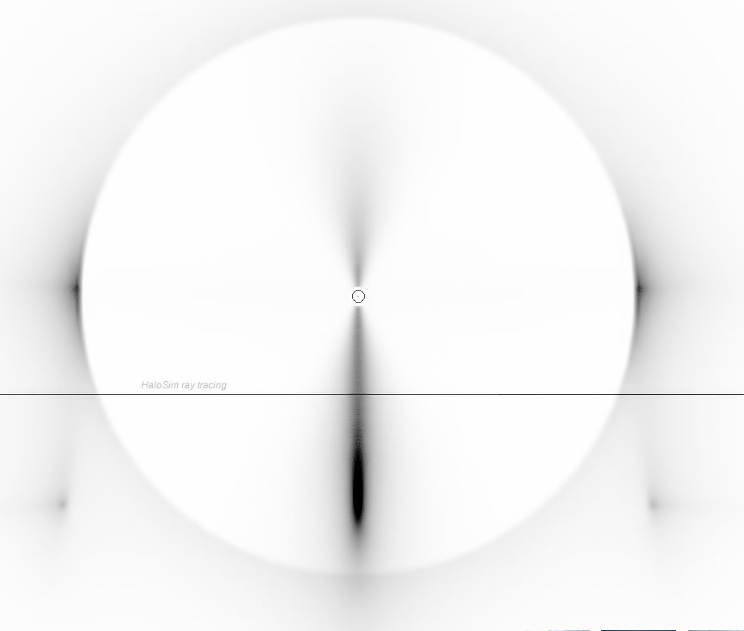OPOD - Montana Halos
OPOD - Montana Halos: A Spectacular Display of Atmospheric Optics
Have you ever witnessed a mesmerizing display of atmospheric optics? If not, let me take you on a journey to Red Rock Lakes National Wildlife Refuge in Montana, where James Perdue captured a stunning image of halos created by nearby diamond dust crystals. Situated 28 miles away from civilization, the refuge provides an ideal setting for experiencing the wonders of nature.
As we delve into the intricacies of these Montana halos, let's explore the various phenomena that contribute to their formation and understand the unique characteristics that make them so captivating.
The Formation of Halos
Halos are optical phenomena created by the interaction of sunlight with ice crystals suspended in the atmosphere. In this case, the halos were formed by diamond dust crystals present in the vicinity. These tiny ice crystals act as prisms, refracting and reflecting sunlight to produce a range of ethereal effects.
The 22° Halo
One of the most prominent features captured in James Perdue's photograph is the 22° halo encircling the sun. This halo appears brighter towards the ground, where the density of halo-forming crystals is highest. The 22° halo is created by randomly oriented ice crystals that refract sunlight at an angle of approximately 22 degrees.
Sun Pillars and Sundogs
In addition to the 22° halo, the image showcases other fascinating optical phenomena. A lower sun pillar can be seen stabbing downwards from the sun, extending to the picture's lower edge as individual glints from nearby crystals. These sun pillars are caused by the reflection of sunlight off horizontally-oriented plate crystals.
To the left and right of the sun, we observe brightenings outside the 22° halo. While these brightenings could be attributed to a particularly dense band of crystals, they are more likely to be sundogs, also known as parhelia. Sundogs are produced by plate crystals with large wobbles from horizontal orientation. These glimmers of light create a beautiful display surrounding the sun.
Pillar-Like Extensions and Subparhelia
If you examine the image closely, you will notice faint colored 'pillars' extending downwards from each parhelion, adding to the enchanting scene. These pillar-like extensions are a result of the interaction between the parhelia and the subparhelia below the horizon. The HaloSim ray tracing simulation displayed alongside the photograph provides a visual representation of these pillar-like extensions and the complex interplay of light and ice crystals.
A Captivating Natural Phenomenon
The Montana halos showcased in this image exemplify the captivating beauty of atmospheric optics. The intricate patterns, vibrant colors, and ethereal glow created by sunlight interacting with ice crystals in the atmosphere are truly a sight to behold. These phenomena serve as a reminder of the wonders of nature and the complexity of light's interaction with our atmosphere.
In conclusion, witnessing the splendor of Montana halos is a rare treat. Thanks to James Perdue's breathtaking photograph, we are able to marvel at the intricacies of these atmospheric optical phenomena. The 22° halo, sun pillars, sundogs, and pillar-like extensions all contribute to creating a visual spectacle that ignites our curiosity and appreciation for the natural world. So, if you ever find yourself in Red Rock Lakes National Wildlife Refuge during the right conditions, keep your eyes peeled for these awe-inspiring Montana halos.

Montana Halos
By James Perdue at Red Rock Lakes National Wildlife Refuge. "The only way to get here right now is a 28 mile snowmobile ride." ©James Perdue

The halos were formed by nearby diamond dust crystals.
A 22° halo circles the sun, brighter towards the ground where the halo forming crystals were at their densest.
A lower sun pillar stabs downwards from the sun and persists at the picture’s lower edge as individual glints from close-by crystals.
The brightenings outside the 22° halo to the left and right of the sun could be a due to a particularly dense band of crystals but they are more likely sundogs (parhelia) produced by plate crystals with large wobbles from horizontal.
Look closely to see faint coloured ‘pillars’ extending downwards from each parhelion.
The HaloSim ray tracing simulation at left used randomly oriented crystals (for the 22° halo) and thin plate crystals with large wobbles from horizontal. It shows the pillar-like extensions linking the parhelia to the below horizon subparhelia.
Note: this article has been automatically converted from the old site and may not appear as intended. You can find the original article here.
Reference Atmospheric Optics
If you use any of the definitions, information, or data presented on Atmospheric Optics, please copy the link or reference below to properly credit us as the reference source. Thank you!
-
<a href="https://atoptics.co.uk/blog/opod-montana-halos/">OPOD - Montana Halos</a>
-
"OPOD - Montana Halos". Atmospheric Optics. Accessed on November 21, 2024. https://atoptics.co.uk/blog/opod-montana-halos/.
-
"OPOD - Montana Halos". Atmospheric Optics, https://atoptics.co.uk/blog/opod-montana-halos/. Accessed 21 November, 2024
-
OPOD - Montana Halos. Atmospheric Optics. Retrieved from https://atoptics.co.uk/blog/opod-montana-halos/.